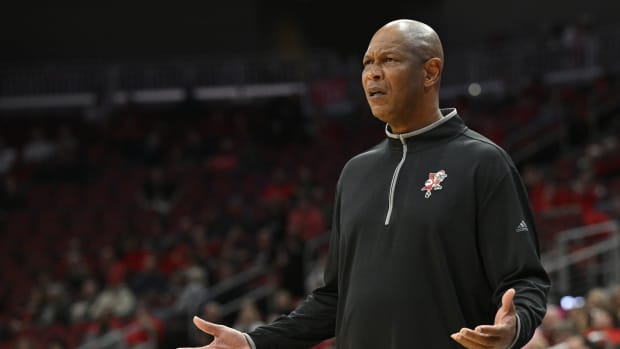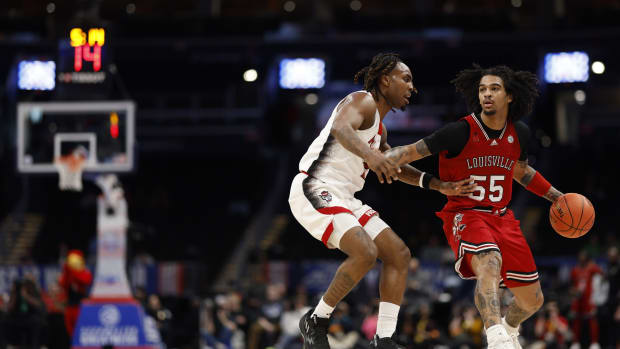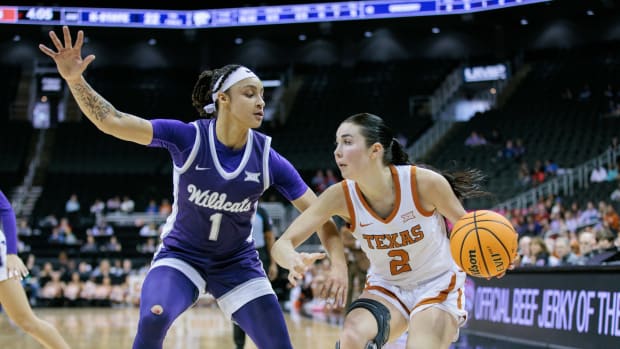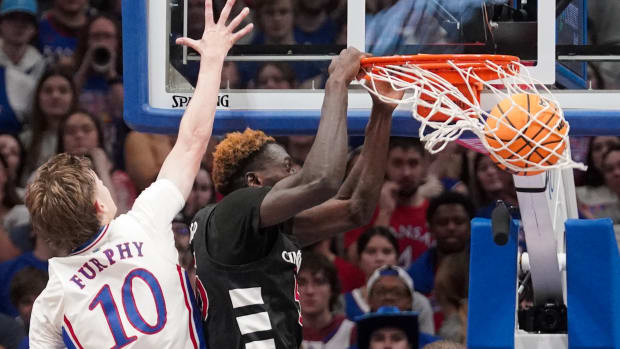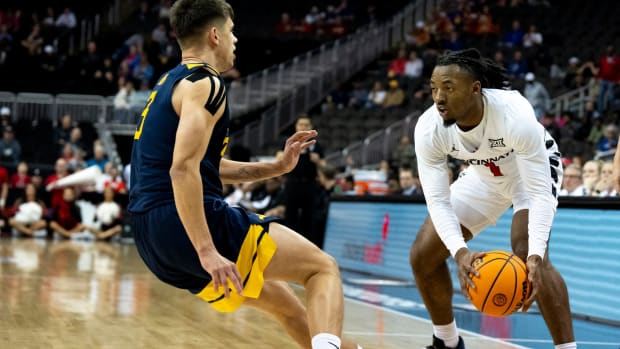Will Press Virginia have a postseason breakthrough?
The college basketball off-season is long and largely lacking in major news developments. Programs are still finalizing their 2017 recruiting classes and sorting out which of their players will return for another season or jump to the professional ranks. We’ve got a long way to go until Midnight Madness. To help pass the time, SI.com is asking and answering three key questions about each of the teams in our Way-Too-Early Top 25. Here’s No. 15, West Virginia.
1. Is this the year Press Virginia has its postseason breakthrough?
Two Sweet 16 appearances in three seasons cannot be dismissed out of hand. Plenty of programs would sell vital organs for that sort of achievement. But West Virginia’s three-year run of consistency—including steadily rising win totals of 25, 26 and 28, respectively—is accompanied by a nagging suspicion that its system isn’t built for deep runs in the NCAAs. Eventually in the NCAA tournament bracket, the Mountaineers face teams with good guards, and those good guards typically navigate nonstop full-court harassment well. Which, in turn, neutralizes or mitigates West Virginia’s biggest advantage.
Final Four teams have delivered the two Sweet 16 losses (the then-undefeated Kentucky juggernaut in 2015 and national runners-up Gonzaga in 2017), so that is arguably a matter of rotten luck more than a commentary on the program’s vital signs. But here’s the truth: The defensive system isn’t really the issue. In its last three tourney losses, West Virginia has shot 24.1%, 30.8% and 26.7%, respectively. In the big moments, the offense has been an absolute abomination. And those were top-50 offenses in each season. If there’s any correlation between experience and better postseason performance, or any truth to the law of averages, then a roster that loses just two rotation players is due to avoid seizing up on the March stage again. As long as it avoids a team fated for San Antonio, anyway.
2. Is Jevon Carter poised for a run at an All-America season?
To make that sort of leap, West Virginia collectively must have a top 10-level season, probably, and college basketball observers will have to give the senior-to-be guard the same credit for defensive prowess that they gave Wisconsin’s Ethan Happ last season. Carter, who has declared for the NBA draft without signing with an agent, finished 2016-17 ranked third in the nation in defensive Win Shares (3.1), 14thin defensive rating (89.6) and 13th in steal percentage (4.3%). And he filled box scores with a team-best 13.5 points and 3.7 assists per game; meanwhile, 5.0 boards per night make Carter the program’s leading returning rebounder. Feel free to contend that the defensive numbers are a product of a system. Any player must be proficient enough to execute said system, and Carter does that at an elite level while also deploying a well-rounded offensive repertoire.
Reality suggests a spike in Carter’s offensive numbers would help his candidacy for national renown. A 43.9% raw shooting percentage isn’t raising anyone’s eyebrows. But the results from Big 12 play suggest there might be something more there. Carter shot 50.9% on two-point attempts during league play and just 45.6% on two-point attempts before it. If his efficiency continues along that trajectory while he maintains or offers a little more than 38.9% shooting from long range, Carter will be difficult to ignore.
How will South Carolina follow up Final Four run?
3. Who replaces Nathan Adrian?
The Morgantown native did a little bit of everything for his hometown program with 9.6 points, 6.0 rebounds, 2.9 assists and 1.3 steals in his final season. The raw rebounding rate was a team-high, so that’s probably the best place to start. Adrian grabbed 11.2% of all available rebounds, which ranked fourth among West Virginia players who saw action in 30 or more games. There should be enough prowess on the glass from younger, less experienced big bodies to compensate. Elijah Macon, a 6’9” senior-to-be, effectively led rotation players with a rebounding rate of 14.7%. Sagaba Konate, a 6’8” rising sophomore, was second with 14.6%. Still, they combined for fewer minutes played—964—than Adrian’s total of 1,121. How the performance translates when they’re more than bit players remains to be seen.
It would help greatly if Esa Ahmad upped his efficiency in that department just a bit. The 6’8” junior-to-be was the team’s second-leading scorer (11.3 points per game) and he collected 4.3 boards per game. But Ahmad’s rebounding rate (10.3%) was fifth among players with at least 30 games played. Assuming there are more rebounds available without Adrian there to snatch them, and assuming Ahmad logs even more minutes in 2017-18, he’d be the likeliest and best candidate to replace what was lost with Adrian’s graduation, and then some.
